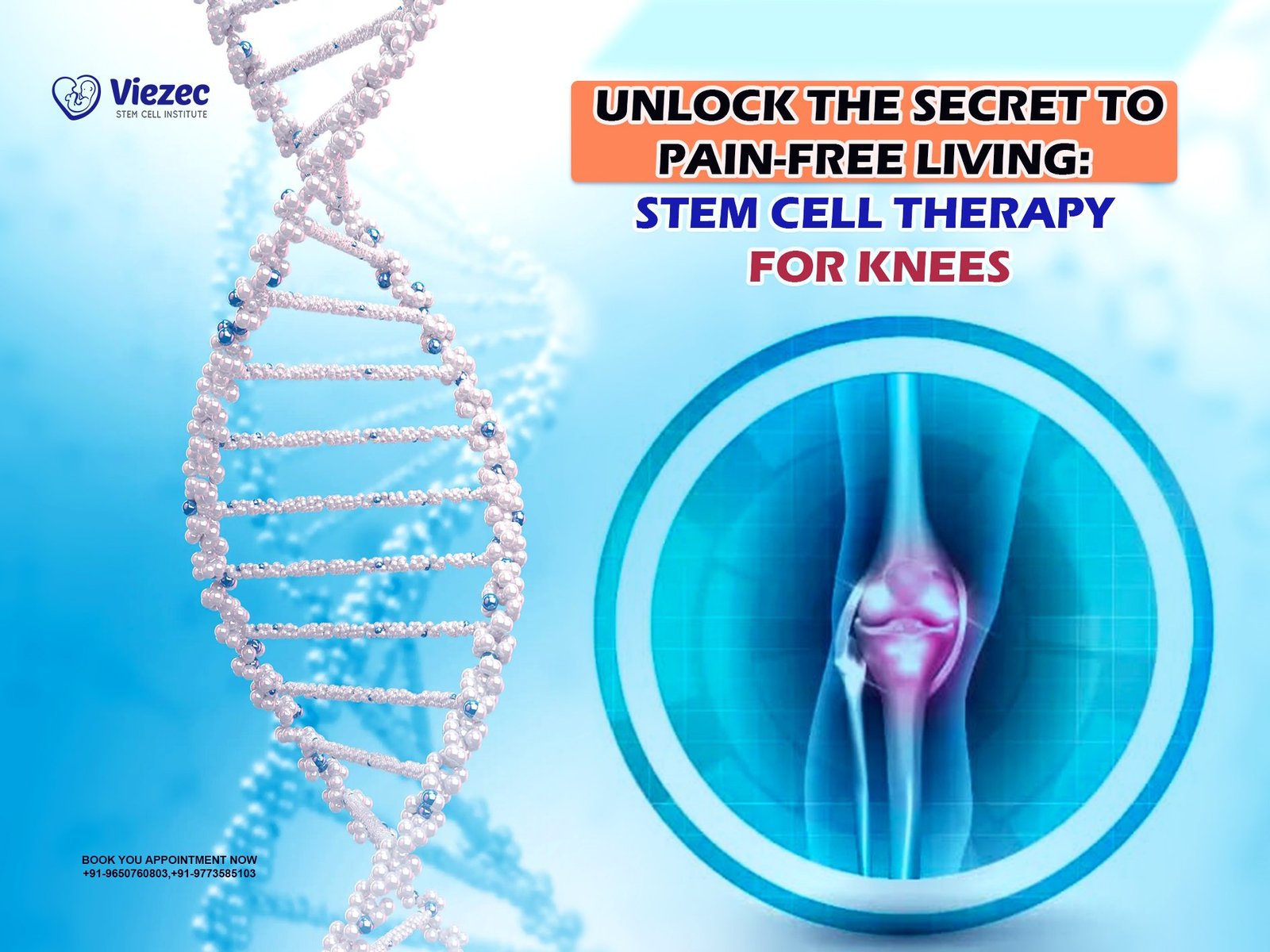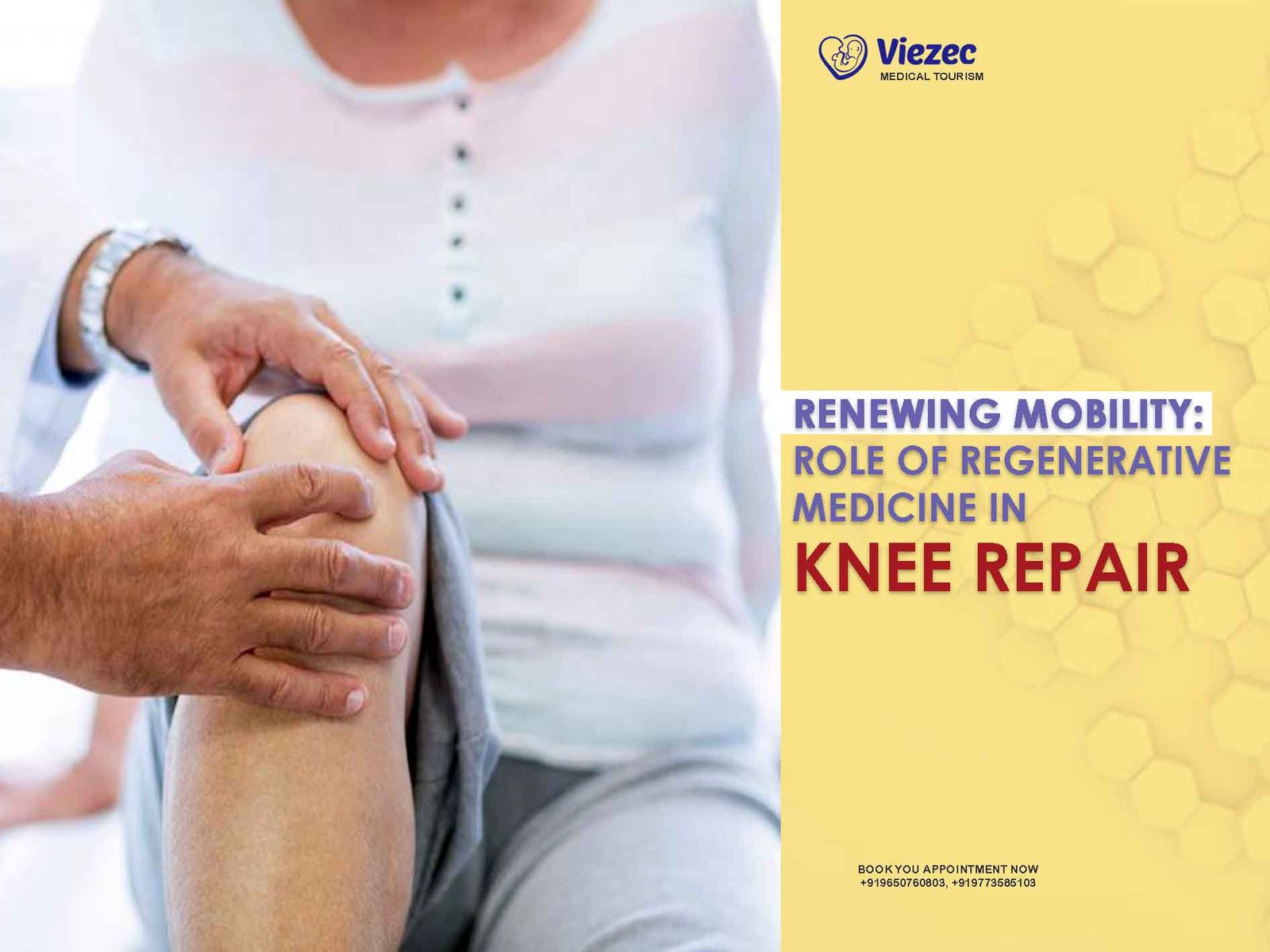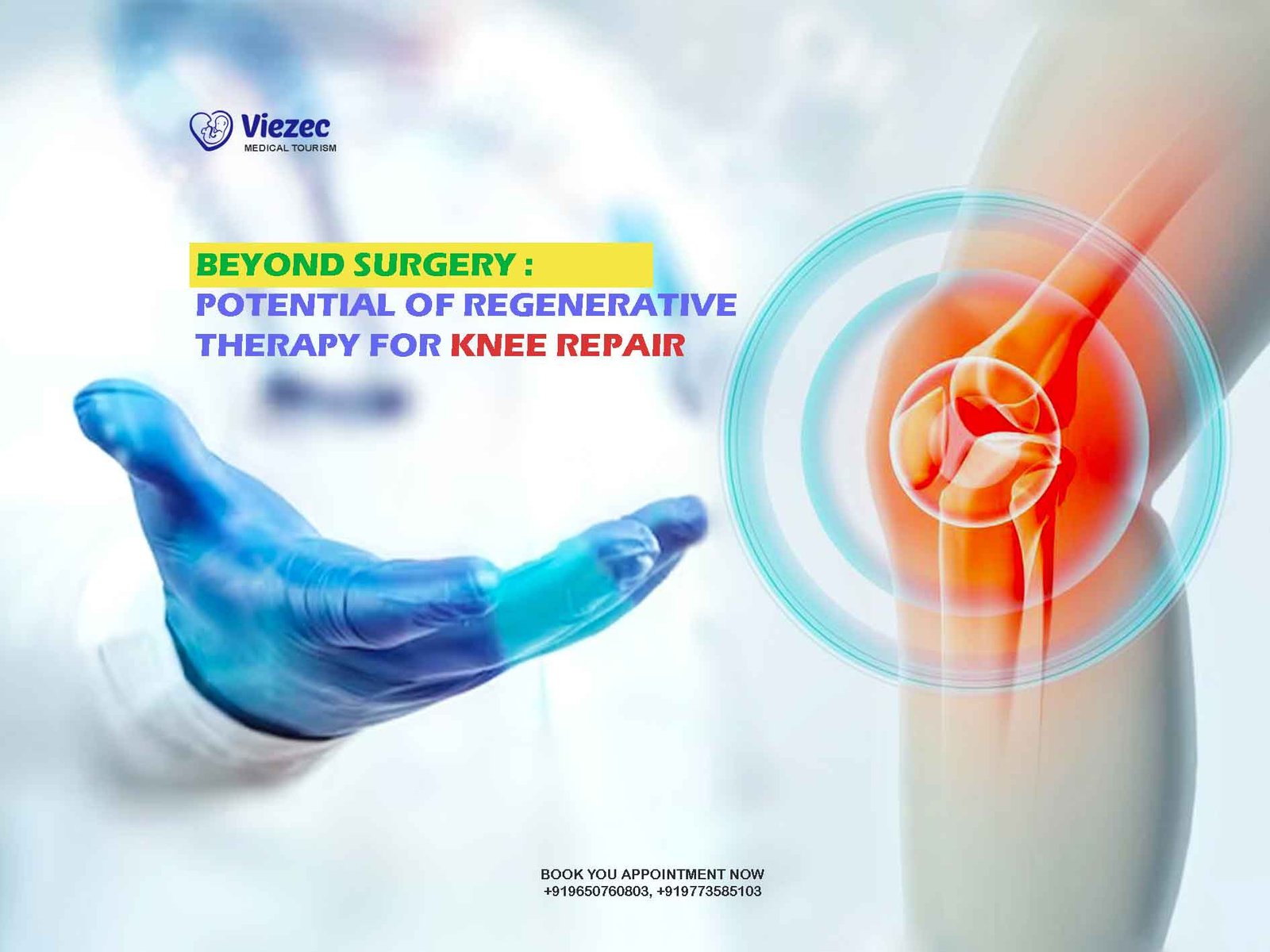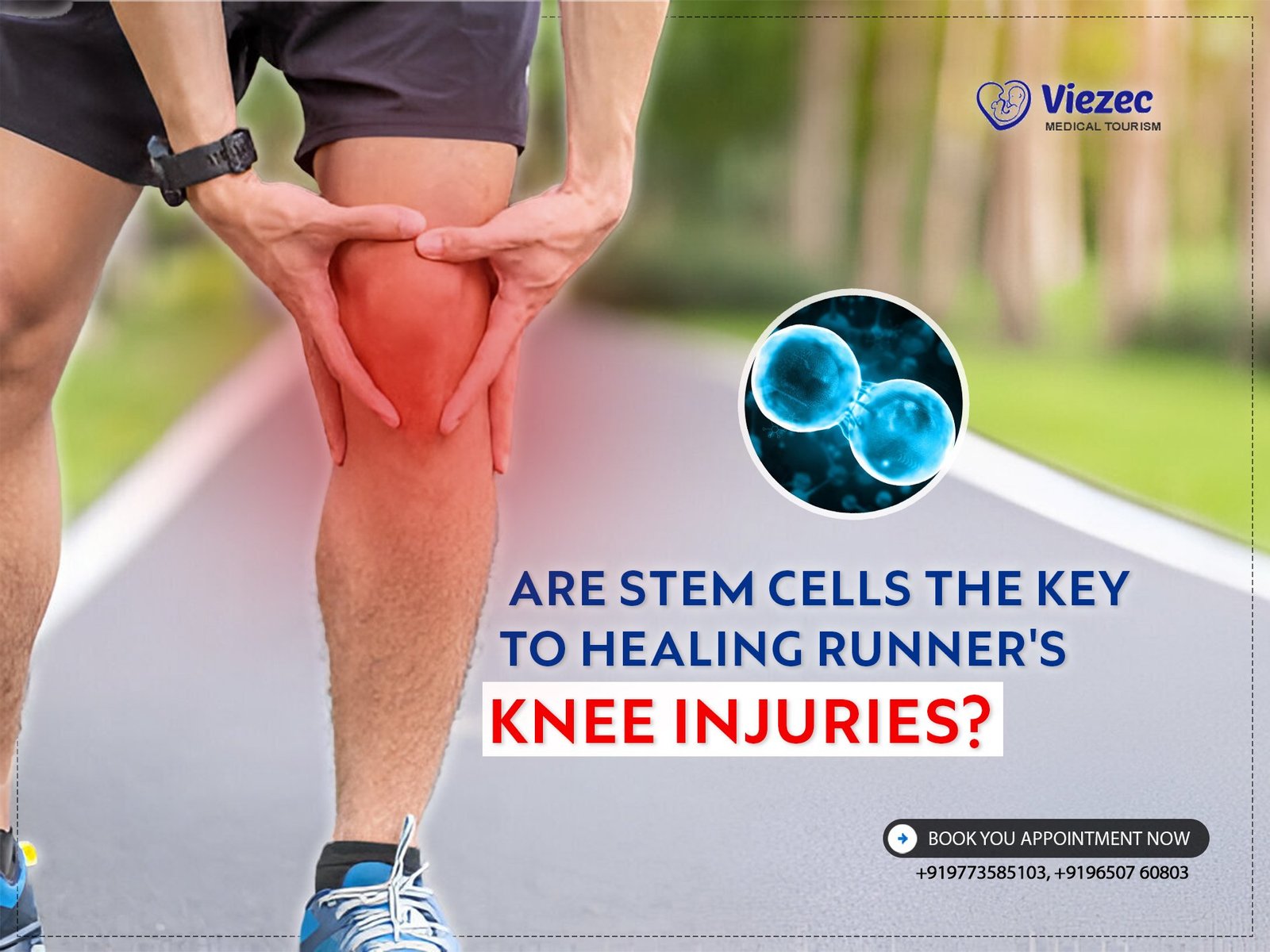Knee pain can be a relentless companion, impacting every aspect of your life, from the simplest daily activities to your dreams of running that marathon you’ve always wanted to conquer. But what if we told you that there’s a remarkable solution that not only alleviates this pain but also offers a chance at a pain-free, active life? Enter the world of stem cell therapy for knees, a cutting-edge medical breakthrough that’s transforming the landscape of pain management.
Intriguingly, India has played a significant role in this transformative journey. As we delve into the depths of this innovative treatment, we will explore how stem cell therapy harnesses the body’s natural healing potential to target the root causes of knee pain. Join us on this enlightening journey to unlock the secret to pain-free living and discover the extraordinary role India plays in making this dream a reality.
Understanding Knee Pain
Knee pain, a ubiquitous ailment affecting people of all ages, deserves our attention and comprehension. It doesn’t discriminate, striking due to wear and tear, sports injuries, or debilitating conditions like osteoarthritis. This relentless discomfort can disrupt daily life, from simple activities to the pursuit of our passions. Traditional treatments offer fleeting relief, but to conquer knee pain, we must first understand its origins and repercussions. It’s imperative to fathom the toll it takes on both our physical and emotional well-being. By unraveling the complexities of knee pain, we set the stage for exploring groundbreaking solutions like stem cell therapy, offering new hope for those who suffer.
What is Stem Cell Therapy?
Stem cell therapy is a cutting-edge medical procedure that utilizes the body’s natural regenerative capabilities to address specific health issues. In the context of knee pain, this therapy harnesses the power of stem cells to stimulate tissue repair and reduce inflammation. Stem cells are versatile cells that can develop into various specialized cell types, making them ideal for healing damaged tissues in the knee joint. This regenerative potential is also being explored for rotator cuff recovery without surgical treatment, offering a promising non-invasive alternative for shoulder injuries.
Stem Cell Therapy Process
The process of stem cell therapy for knees is a marvel of medical innovation. It begins with the careful extraction of stem cells, often sourced from the patient’s own bone marrow or adipose tissue, ensuring compatibility and minimizing the risk of rejection. These stem cells, with their remarkable regenerative potential, are then meticulously processed and concentrated.
The culmination of this intricate procedure lies in the precise injection of these stem cells directly into the affected knee joint, without the need for invasive surgery. This minimally invasive approach not only accelerates healing but also reduces recovery times, making it an appealing alternative to traditional treatments. The body’s innate ability to repair itself takes center stage, offering renewed hope for a life free from the shackles of knee pain.
Advantages of Stem Cell Therapy
Stem cell therapy, a beacon of hope for those plagued by relentless knee pain, offers a myriad of advantages over traditional treatments. Unlike mere symptom management, this cutting-edge approach delves deep into the root cause of the pain. By triggering tissue regeneration and reducing inflammation, it strives to offer long-term relief. The results are not only transformative but also accompanied by a significantly shorter recovery period compared to surgical interventions, allowing individuals to return to their active lives swiftly.
Moreover, the prospect of lasting pain relief and improved joint function has made stem cell therapy a preferred choice. This groundbreaking therapy not only offers the promise of pain-free living but also the possibility of a brighter, more active future.
India’s Role in Stem Cell Therapy
In the realm of medical innovation, India shines as a beacon of excellence, particularly in the domain of stem cell therapy. The nation has asserted itself as a global leader, drawing the attention of patients worldwide seeking effective, accessible treatments for knee pain. Renowned for its cutting-edge medical infrastructure and expertise, India stands as a frontrunner in providing stem cell therapy, offering a promising solution to those battling knee pain.
India’s stem cell therapy centers, staffed by highly qualified experts, have pioneered techniques and protocols that have revolutionized the field. Patients from diverse corners of the globe are drawn to India not only for the exceptional quality of care but also for its cost-effectiveness. This attractive blend of expertise and affordability underscores India’s crucial role in making stem cell therapy accessible to all, further solidifying the nation’s position at the forefront of this transformative medical breakthrough.
Stem Cell Therapy Success Stories
The real value of stem cell therapy can be seen in the success stories of individuals who have experienced life-changing improvements. Countless patients have reported reduced pain, increased mobility, and a return to their active lifestyles after undergoing stem cell therapy. These stories underscore the transformative potential of this treatment.
Safety and Risks
While stem cell therapy offers remarkable benefits, it’s essential to consider safety and potential risks. Like any medical procedure, there are associated risks, including infection or an adverse reaction. Therefore, it is crucial to choose a reputable clinic with experienced professionals to minimize these risks.
Eligibility for Stem Cell Therapy
Determining eligibility for stem cell therapy is a critical step in the journey to pain-free living. The criteria for inclusion typically involve assessing the patient’s overall health, the severity of knee pain, and the underlying cause. A comprehensive evaluation by a qualified healthcare provider is essential to ascertain whether stem cell therapy is a suitable option. While age isn’t necessarily a barrier, individual health factors and the nature of the knee condition play a pivotal role in determining eligibility for this groundbreaking treatment.
Preparing for Stem Cell Therapy
Before embarking on the transformative journey of stem cell therapy, adequate preparation is key to ensure the best possible outcome. The preparatory phase may involve adjusting one’s diet, supplements, and medications under the guidance of healthcare professionals. These proactive measures aim to optimize the body’s readiness for the therapy, enhancing the chances of success.
Patients should engage in open communication with their medical team to understand specific pre-treatment requirements. Preparing for stem cell therapy not only enhances the effectiveness of the procedure but also ensures a smoother recovery and a greater likelihood of experiencing the full benefits of this innovative treatment. It’s a vital step towards unlocking the secret to pain-free living and rejuvenating one’s quality of life.
Post-Treatment Care
The journey to pain-free living doesn’t conclude with stem cell therapy—it’s only the beginning. After the procedure, diligent post-treatment care becomes paramount. Patients should anticipate a tailored recovery process involving follow-up appointments and physical therapy. These post-treatment measures are designed to maximize the benefits of stem cell therapy, accelerating healing, and enhancing joint function.
Physical therapy plays a pivotal role in restoring mobility and strength, helping patients regain an active lifestyle. Adherence to prescribed care guidelines, exercises, and routine check-ups is essential. With commitment to post-treatment care, individuals can truly unlock the secret to a pain-free and active future.
Alternative Treatments
While stem cell therapy is a promising solution, it’s not the only one. Alternative treatments like knee arthroscopy, corticosteroid injections, or physical therapy may be appropriate in some cases. It’s essential to consider all available options and consult with a healthcare professional.
Current Research and Future Possibilities
The field of stem cell therapy is continually evolving, with ongoing research aimed at improving outcomes and expanding the range of treatable conditions. The future holds exciting possibilities, including customized treatments and enhanced regenerative capabilities.
Cost and Insurance
Understanding the cost of stem cell therapy is vital, as it can vary widely depending on the clinic, location, and the specific procedure. Insurance coverage for stem cell therapy may also vary, so patients should thoroughly investigate their options and budget accordingly.
Stem cell therapy for knees is a revolutionary approach that can unlock the secret to pain-free living for individuals suffering from knee pain. Its effectiveness in alleviating pain and promoting natural healing has made it a popular choice, and India has become a key player in offering this treatment to the world. As we navigate the complexities of knee pain, stem cell therapy shines as a beacon of hope for a brighter, pain-free future.
FAQs
Is stem cell therapy safe for knee pain?
Stem cell therapy is generally considered safe, but it’s essential to choose a reputable clinic and consult with a qualified healthcare provider to minimize risks.
How long does the recovery process take after stem cell therapy?
Recovery times can vary, but many patients experience improvements within a few weeks to a few months.
What are the potential side effects of stem cell therapy?
Potential side effects include infection, pain at the injection site, or an adverse reaction. These risks are typically minimized with proper care and expertise.
Are there age restrictions for stem cell therapy for knee pain?
While there are no strict age restrictions, eligibility is determined on a case-by-case basis, considering the patient’s overall health.
Can stem cell therapy be combined with other treatments for knee pain?
In some cases, stem cell therapy can be combined with other treatments for a comprehensive approach to pain relief. Consult with a healthcare provider to determine the best course of action.









